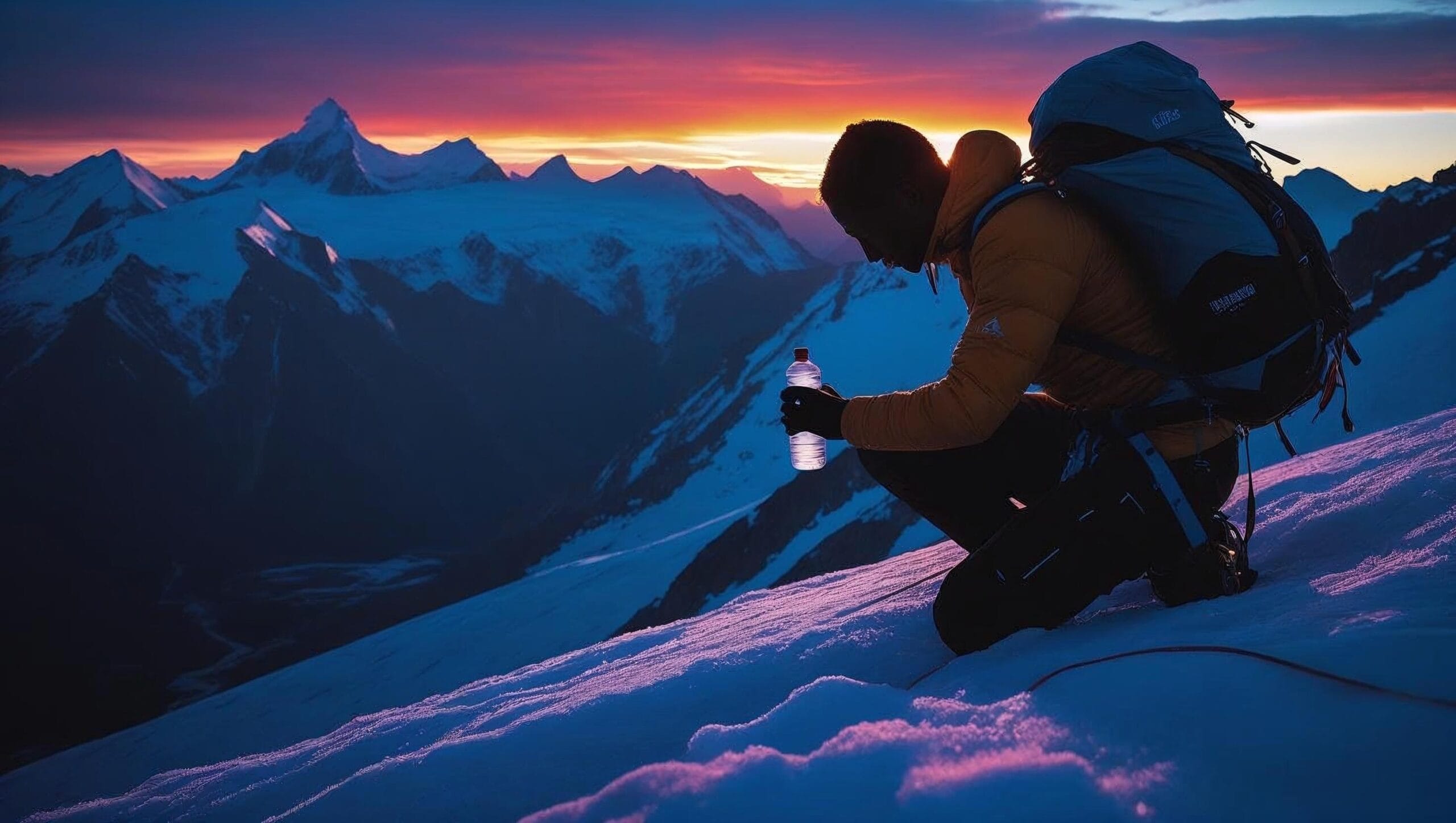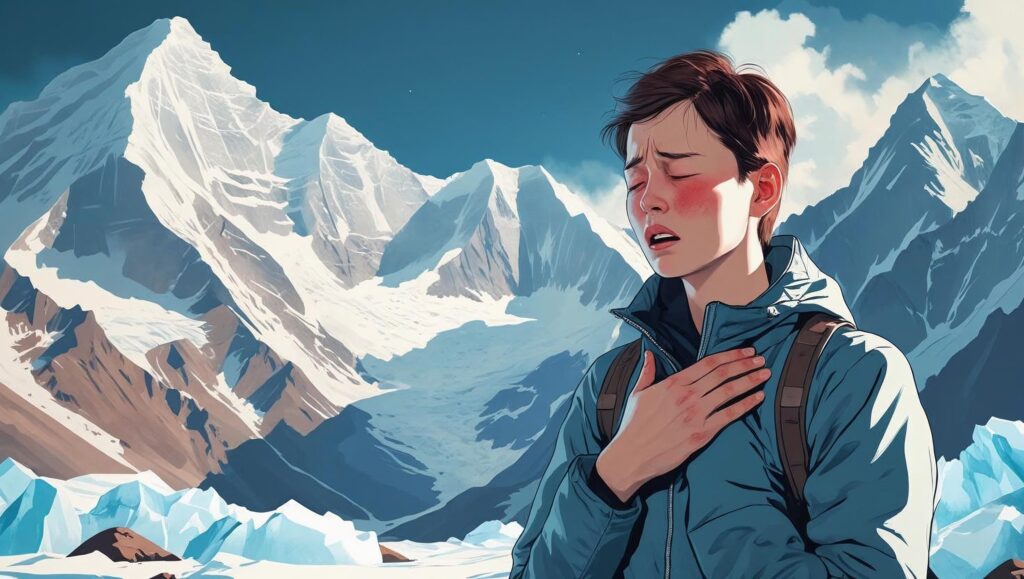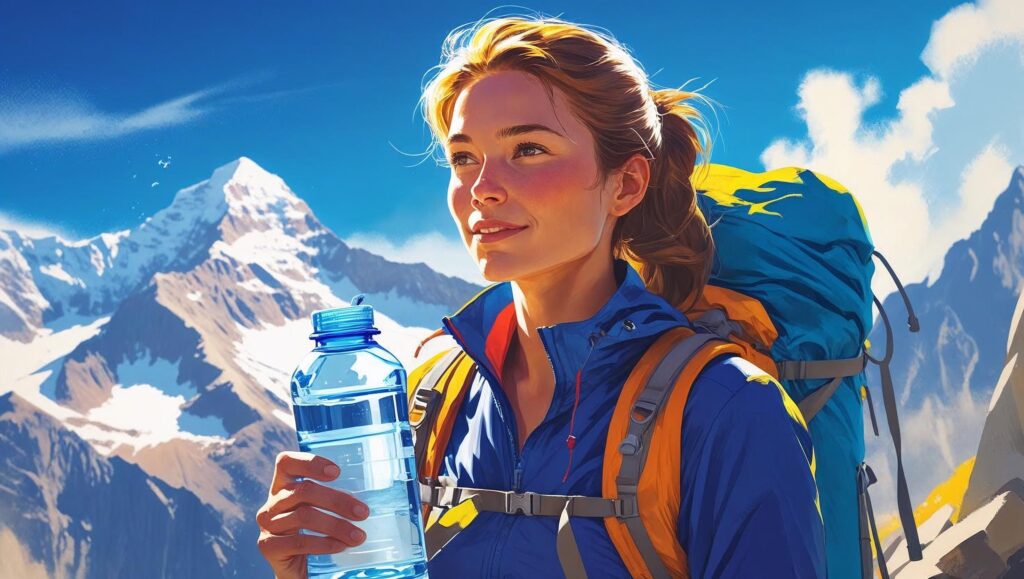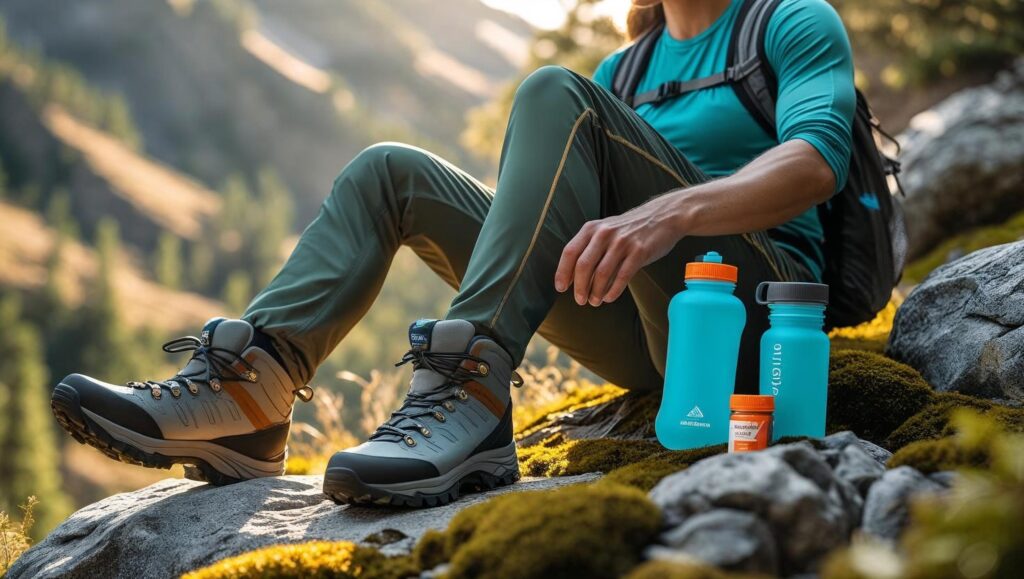Why Hydration Can Make or Break Your High-Altitude Trek
At high altitudes, staying hydrated isn’t just a matter of quenching thirst – it’s a survival strategy.
The mountains, whether you’re trekking through the Himalayas or tackling a smaller Alpine
summit, or preparing for Everest climbing, can fool you. You’re not sweating buckets like on a hot
day, and the cold air doesn’t make you crave water. But your body is using more energy, losing
more moisture, and working harder than you realize. If you’re not careful, that lack of hydration
can stop you in your tracks long before you reach the summit.
So, why does hydration matter so much at high altitudes? And how do you stay properly hydrated
when everything around you feels so… dry? Let’s dive into the science of it, and more importantly,
the simple strategies you can use to make sure you’re always at your peak – physically and mentally – on your high-altitude trekking adventures.

Table of contents
Why Hydration Matters More Than You Think at High Altitudes
Why Hydration Matters More Than You Think at High Altitudes
You might be asking, “Isn’t water just water?” The truth is, when you’re climbing at higher
elevations, your body faces a number of challenges that alter the way it handles hydration. Let’s
break down why hydration becomes even more crucial when you’re climbing above 8,000 feet
(2,400 meters) in Himalayan mountaineering or mount Everest expeditions.
Thinner Air Means More Energy Expended
At high altitudes, the air thins, and there’s less oxygen available for your body. To cope
with the lack of oxygen, your respiratory rate increases. You’re breathing faster, working harder to
pull in enough air – and that means your body is losing more moisture with each breath. The dry
air doesn’t just feel cold – it’s robbing your body of essential fluids without you even noticing. If
you’re climbing Mount Everest or tackling other high-altitude trekking routes, understanding this
oxygen-deprived environment is crucial for altitude acclimatization.
The Sneaky Dehydration Problem
Unlike the hot days at sea level, dehydration at high altitudes doesn’t come with obvious thirst
signals. The lower humidity and cooler temperatures can trick your body into thinking it’s not
thirsty when, in fact, you’re losing water rapidly. By the time you feel thirsty, you’re already
behind the curve. This subtle moisture loss can lead to fatigue, headaches, and even make simple
tasks feel insurmountable.

Altitude Sickness – A Risk You Don’t Want
Dehydration at high altitudes significantly increases your risk of altitude sickness, which can strike
when you’re above 8,000 feet. As you ascend, the body has to adjust to the decreased oxygen
levels, and dehydration makes that adjustment even harder. Altitude sickness prevention strategies
like proper hydration are key in minimizing symptoms like dizziness, nausea, and exhaustion.
Avoiding dehydration is essential in preventing these debilitating symptoms.
Hydration Boosts Performance and Endurance
Proper hydration impacts not only your health but also your physical and mental performance at
altitude. Staying hydrated helps ensure your muscles are functioning at their best, which is crucial
for endurance, especially on long treks such as those encountered during Himalayan
mountaineering. Without enough water, even the most seasoned climbers can experience sluggish
muscles, making each step harder and more draining.
Hydration also impacts mental sharpness. At high altitudes, cognitive function can be
compromised, and dehydration exacerbates this problem. Hydration ensures your mind stays alert
and focused, which is essential for decision-making and navigating difficult terrain during outdoor
adventures.

How to Stay Hydrated on Your High-Altitude Adventure
Now that we understand why hydration is so critical, let’s explore practical tips to help you stay
hydrated during your climb or trek. These tips are designed to make hydration a seamless part of
your journey, ensuring that you’re always performing at your best.
Drink Small Amounts, Often
At high altitudes, waiting until you feel thirsty can be too late. Instead, aim to sip water
consistently throughout the day. On average, you should aim for about 3-4 liters of water per day,
though this can vary based on your activity level and the conditions. Drink small amounts often
to prevent your body from getting too dehydrated in the first place. This is especially true when
you’re focusing on altitude acclimatization to reduce the stress on your body.
Electrolytes Are Your Friends
While water is essential, it’s not the only thing your body needs at high altitudes. As you sweat
and breathe faster, you’re losing more than just water – you’re also losing electrolytes like
sodium, potassium, and magnesium. These minerals are crucial for maintaining fluid balance and
muscle function. Including electrolyte tablets in your water or adding a pinch of salt can help
replenish these lost minerals and keep you feeling energized, especially on longer treks, like
those in high-altitude trekking or Himalayan mountaineering.

Avoid Alcohol and Caffeine
You might think a warm cup of tea or a celebratory drink would be the perfect way to unwind at
the end of a long day on the trail. But both alcohol and caffeine are diuretics, meaning they make
you urinate more and dehydrate you further. While one cup of tea or a small drink might not
have a huge impact, it’s important to keep these beverages to a minimum. Stick with water,
herbal teas, or natural juices to stay properly hydrated. When you’re on high-altitude treks,
staying hydrated at high altitudes is essential for performance.
Hydrate with Foods
Not all of your hydration needs to come from water alone. Many fruits and vegetables are rich in
water content, making them great additions to your high-altitude diet. Watermelon, oranges,
cucumbers, and cantaloupe are all excellent choices. These hydrating foods provide much-needed
moisture while also giving you a boost of energy to power through your trek. Incorporating these
foods is a great way to stay hydrated during mountaineering.
Keep Your Water from Freezing
High-altitude environments can get cold, and that includes your water. Frozen water can be a
serious problem when you’re on the move. To prevent this, use an insulated hydration pack (like
a Camelbak) or keep your water bottle inside your jacket to keep it from freezing. Having easy
access to water at all times is crucial for staying hydrated on high-altitude trekking adventures.

Monitor Your Urine Color
It may sound a little strange, but one of the simplest ways to track your hydration levels is
by checking your urine color. Aim for light yellow, which indicates proper hydration. Darker urine
is a sign that you’re not drinking enough, and it’s time to hydrate before dehydration sets in.
In Conclusion: Hydration is Key to Your High-Altitude Success
Climbing or trekking at high altitudes is a challenging but incredibly rewarding experience. But to
ensure that you reach the summit safely and efficiently, hydration for high-altitude trekking should
always be at the top of your checklist. Water is the fuel that keeps your body functioning at its best – so whether you’re heading for the Everest Base Camp trek, tackling a trek in Nepal, or exploring
the stunning Alps, remember that staying hydrated is the foundation of a safe and successful
journey.
Hydration might seem like a small detail in the grand scheme of things, but trust me, it can make
all the difference when you’re at the top of the world, whether you’re taking part in
mountaineering or preparing for altitude acclimatization.
